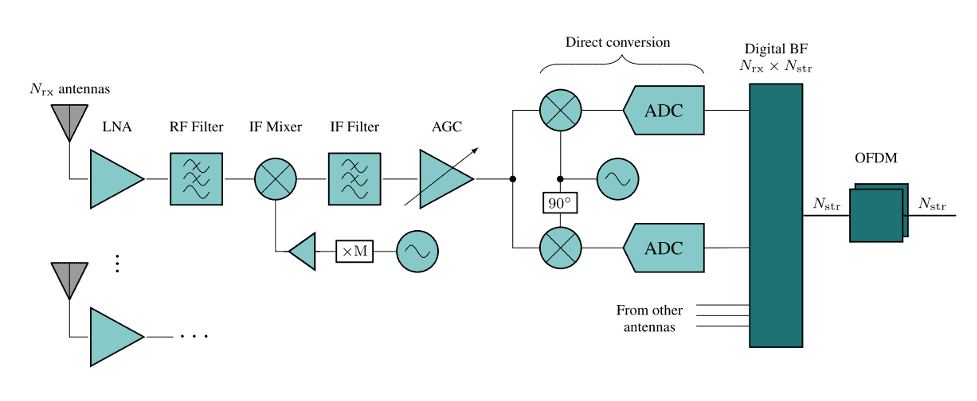Energy Efficient mmWave and THz Communications

NYU Wireless P.I.s
Collaborators
- Mark Rodwell (USCB),
- Jim Buckwalter (USCB)
Research Overview
A key challenge for communication in the mmWave and THz bands is power consumption. Systems in these frequencies require large numbers of antenna elements running at very high sampling rates, often with relatively inefficient radio frequency (RF) devices. Mobile and portable devices, as well as small cell access points, have highly constrained power budgets. To address these challenges, this project investigates energy consumption from a system’s perspective in an integrated manner across circuits, signal processing and network protocols.
Our results include studies of low power fully digital arrays with low resolution ADCs as well as a systematic and general methodology for understanding and optimizing trade-offs of power consumption and end-to-end performance of a large class of potential receivers. In collaboration with researchers at UCSB, the framework has been applied to the design of a fully digital 140 GHz in 90 nm SiGe BiCMOS, where we have optimized key RF components including the low noise amplifier (LNA), mixer, local oscillator (LO) and analog-digital converter (ADC) to achieve power savings of up to 80%. MAC-layer protocols, particularly with low-power idle modes, have also demonstrated to offer dramatic savings in cases of intermittent traffic.
follow this research
*stay current with research in this area by completing this form

 2025 Brooklyn 6G Summit — November 5-7
2025 Brooklyn 6G Summit — November 5-7 Sundeep Rangan & Team Receive NTIA Award
Sundeep Rangan & Team Receive NTIA Award 2025 Open House
2025 Open House








